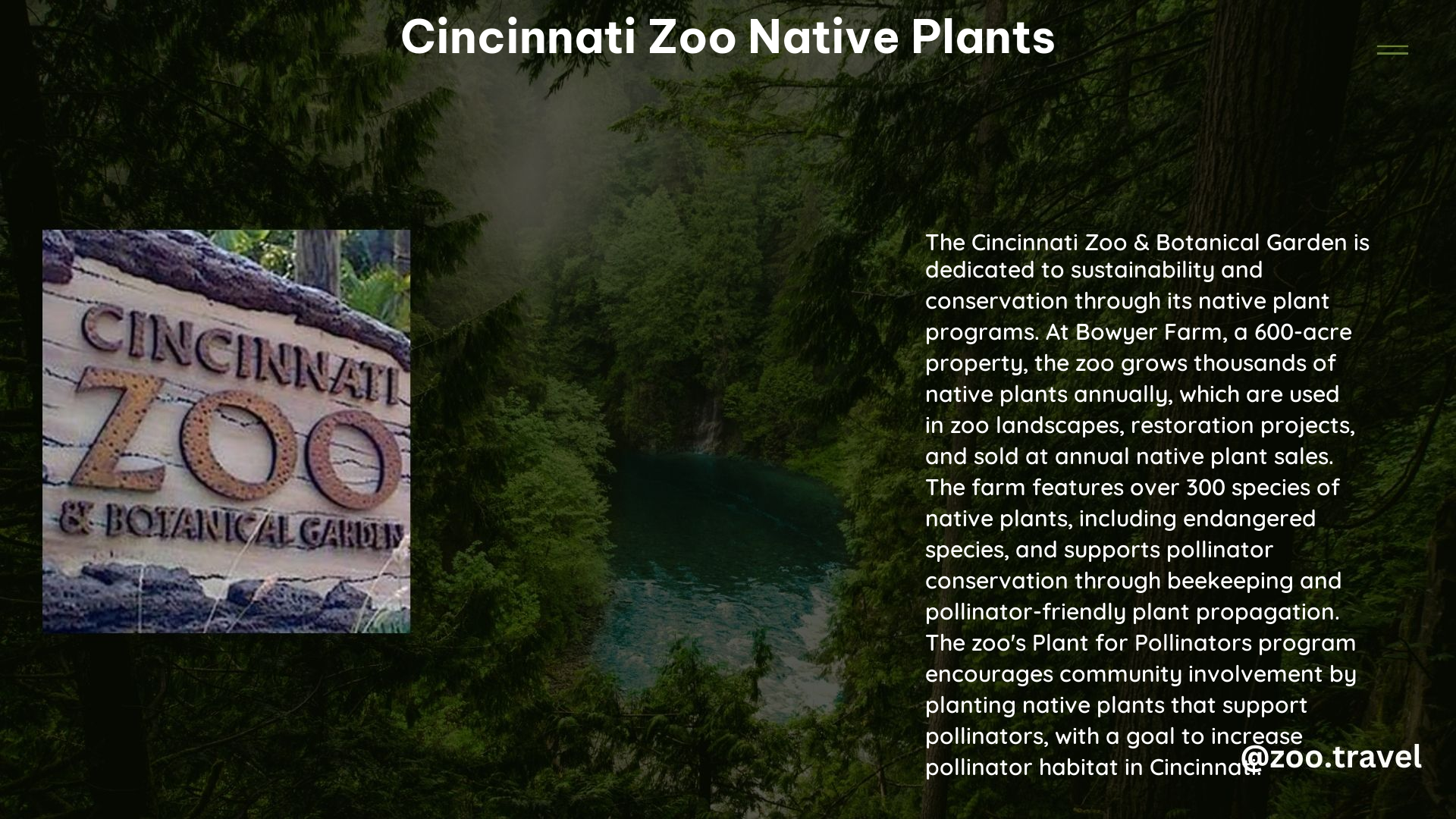The Cincinnati Zoo & Botanical Garden is dedicated to promoting and conserving native plants, which are essential for pollinators and the local ecosystem. From their Native Plant Program to the Bowyer Farm, the zoo is leading the way in native plant conservation and education.
The Cincinnati Zoo’s Native Plant Program
The Cincinnati Zoo’s Native Plant Program focuses on growing and conserving native plants that are valuable to horticulture. This program includes the collection and propagation of native plant material, conservation efforts with C.R.E.W., and the use of native plants in zoo landscapes and exhibits.
Collecting and Propagating Native Plants
The zoo’s team of horticulturists and botanists work tirelessly to collect and propagate native plant material from the local region. This ensures that the plants used in the zoo’s landscapes and exhibits are well-suited to the local climate and ecosystem.
Collaboration with C.R.E.W.
The zoo collaborates with the Center for Conservation and Research of Endangered Wildlife (C.R.E.W.) to support conservation efforts for native plants. Together, they work to protect and restore native plant populations in the region.
Integrating Native Plants in Zoo Landscapes
The Cincinnati Zoo incorporates native plants throughout its landscapes and exhibits, creating habitats that support local wildlife and pollinators. Visitors can explore gardens and exhibits that showcase the beauty and importance of native plants.
Bowyer Farm: A Hub for Native Plant Conservation

Bowyer Farm, a 600-acre property owned by the Cincinnati Zoo, is a key component of the zoo’s native plant program. This farm serves as a hub for growing, propagating, and distributing native plants.
Growing Thousands of Native Plants
Each year, the Bowyer Farm grows thousands of native plants, which are then used in the zoo’s landscapes, restoration projects, or sold to the public during the zoo’s annual native plant sales.
Wetland Restoration and Beekeeping
In addition to growing native plants, the Bowyer Farm also includes wetland restoration efforts and beekeeping operations. These initiatives support the zoo’s broader conservation and sustainability goals.
Native Plant Sales
The Cincinnati Zoo hosts annual native plant sales at the Bowyer Farm, offering a wide selection of reasonably priced, well-grown, and ecologically important native plants to the public. These sales are a crucial way for the zoo to engage the community and support its conservation efforts.
Promoting Pollinator-Friendly Plants
The Cincinnati Zoo’s “Plant for Pollinators” program aims to boost pollinator populations by encouraging the use of pollinator-friendly native plants.
Pollinator Plant Trials
The zoo conducts trials to determine the best native plants for pollinators in the Midwest region. This research helps inform the zoo’s recommendations and guides the public in selecting the right plants for their gardens.
Partnerships and Community Engagement
The zoo partners with local growers and garden centers to increase the availability of pollinator-friendly native plants. Additionally, the zoo engages with the community to establish pollinator gardens in public spaces, further expanding the reach of its conservation efforts.
Showcasing Native Plants in Gardens and Exhibits
The Cincinnati Zoo features various gardens and exhibits that showcase native plants, providing visitors with the opportunity to learn about and appreciate the importance of these local species.
Night Hunters Habitat Garden
The Night Hunters habitat garden at the zoo features a variety of native plants that provide food and shelter for nocturnal wildlife, such as owls and bats.
Passenger Pigeon Memorial Garden
The Passenger Pigeon Memorial garden honors the extinct passenger pigeon and features native plants that would have been found in the bird’s natural habitat.
Education Center Rain Garden
The Education Center rain garden demonstrates the benefits of using native plants in stormwater management, showcasing their ability to absorb and filter water.
The Conservation Impact of Cincinnati Zoo Native Plants
By promoting and conserving native plants, the Cincinnati Zoo & Botanical Garden is making a significant impact on the preservation of local ecosystems and the health of pollinator populations.
Supporting Pollinators and Ecosystem Health
Native plants are essential for the survival of pollinators, such as bees, butterflies, and hummingbirds. By providing these species with the resources they need, the zoo is helping to maintain the delicate balance of local ecosystems.
Contribution to Food Production and Environmental Health
Pollinators play a crucial role in food production, as they are responsible for the pollination of many fruits and vegetables. By supporting pollinator populations, the Cincinnati Zoo is indirectly contributing to the overall health and productivity of the region’s agricultural systems.
The Cincinnati Zoo & Botanical Garden’s commitment to native plant conservation and education is a shining example of how zoos can play a vital role in preserving local ecosystems and supporting the health of our planet. By visiting the zoo and learning about the importance of native plants, visitors can be inspired to incorporate these species into their own gardens and contribute to the larger conservation effort.
Reference:
– Cincinnati Zoo & Botanical Garden – Native Plants
– Cincinnati Zoo & Botanical Garden – Bowyer Farm
– Cincinnati Zoo & Botanical Garden – Plant for Pollinators
